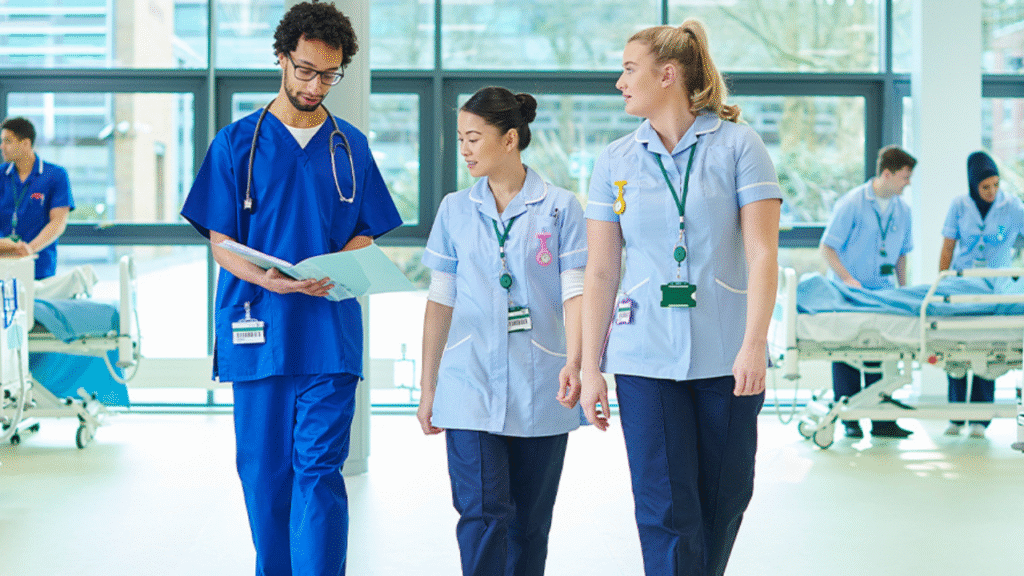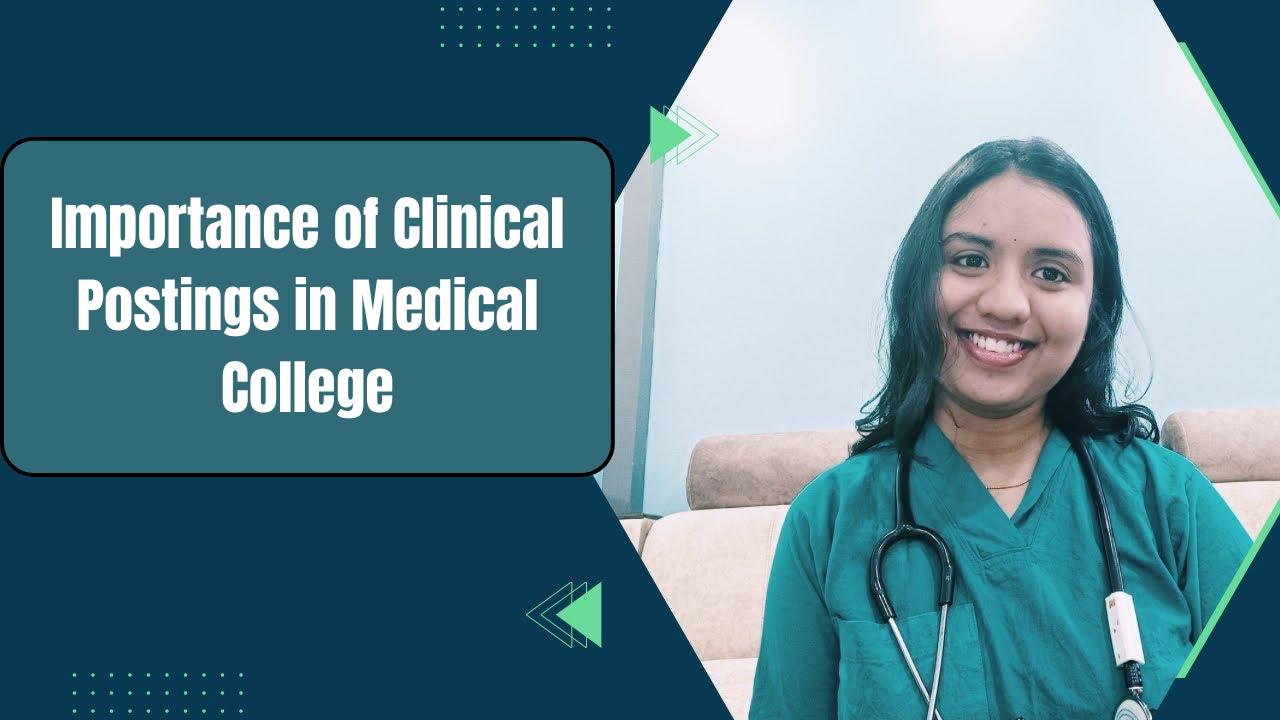The Bachelors of Medicine and Bachelors of Surgery (MBBS) program at Tribhuvan University (TU) spans four and a half years, followed by one year of internship in the corresponding teaching hospitals.1 The teaching in these years is divided into three phases. The first two (of basic sciences, community medicine, medical ethics, and clinical exposure) are followed by a second phase, where learning of subjects such as Forensic Medicine, Community Medicine (Applied Epidemiology, Family Health Exercise), Internal Medicine, Surgery, Gynaecology, and Obstetrics, and Pediatrics takes place. 1 Thereafter, the students are prepared for the last phase, wherein the clinical subjects are emphasized.2 Allotted clinical postings in each of these disciplines with respect to TU are termed as third year and final year. The affiliated colleges can, however, manage the time duration according to their feasibility and complete the duration of 12 weeks. In my college, we have each of these posting for two months in the third year and the remaining of these postings are covered in the final year. For a student who has graduated out of high school and made it to medical school, the first few days are spent in exhilaration. And with weeks passing by, he realizes the bulk of syllabus and exams more so, building up the stress and anxiety.
After two years of basic science, it is almost mandatory for any medical student to enter the clinical phase again with tremendous pressure. The expectation from a medical student at graduation level is to make use of skills acquired in any environment, starting from a primary to a community level. Acquisition of clinical knowledge is necessary but putting it in practice is the most important aspect of medical training.2 While clinical classes are included among the basic science courses, they have not been optimally utilized, thus creating a yawning gap between pre-clinical and clinical phases. I faced that during the early days of my posting and I’m sure most of the students must have faced the same way.

Once the results of my second-year exams were out, the most awaited one was clinical postings at the hospital. For someone like me who has too much of a boring classroom lecture, clinical postings were the ones which seemed to me as a great mental relief from the didactic type learning. And that was, since the very first day, how I planned to make it more efficient and make the experience the best at medical school.
Our third-year clinical posting is divided among rotations of surgery, medicine, pediatrics, and gynecology and obstetrics; each posting lasts for two months. I enrolled first in the gynecology and obstetrics posting. These first days were spent getting to know what happens at gynecology – obstetrics OPD, watching doctors dealing with patients, taking up the clinical skills, and trying to digest everything taught during the day back at the hostel in the evening. History taking is the basic thing that we are assumed to learn at the end of the third year posting. But it is not an easy task to orient ourselves with the history taking and the differences in history taking in the different rotations. It became more relevant everyday that we were expected to build within ourselves the clinical skills as well as have the in-depth knowledge of the topics from the textbooks. Half of my gyne-obs posting passed in this manner, until when I got a chance to witness a surgery and I cannot explain the excitement I had to watch that very surgery by my own eyes. It was a case of Total Abdomen Hysterectomy (TAH) with Bilateral Salphingoophorectomy. I also got a chance to witness a vaginal delivery, watching the smile of a mother at the sight of her just delivered child after excruciating pain was a moment of satisfaction. From that day on I would always look forward to the list of prospective surgeries and make my way into one in case I had no lectures. I was thus drilled into gynecology rotations which nurtured my knowledge in the subject-from history taking, interacting with patients, observing the clinical skills and practicing some skills on my own under the guidance of mentors as well.
Thereafter, I got into the pediatrics rotations, and it certainly is different from the first rotation I experienced. From taking down the history to examining the patient, you really have to make a whole new pattern out of your own to get to the point of information properly. There I had many opportunities to meet patients of glomerulonephritis, with Ewing’s Sarcoma, Japanese encephalitis, and many more diseases. The internal medicine rotations were also fun. The range of patients was really broad, from those who had gastrointestinal problems to those who had neurologic problems. Every day something new was learned, and it was delightful to study through the patients all day and read more about the ailment in the evening. Very tiring, but found it useful getting the practical insight of theoretical knowledge. Then we had the surgery rotations, and most of the case discussions were dealt with general surgery. The iconic memory of surgery rotations for me remain the OT days, where everything seemed amazing. I had the privilege of watching general surgery, neurosurgeries, and cardiothoracic surgery, and also some laparoscopic surgeries. With that, we have now finished all of our rotations for the third year. None of this was included in the finals of third year, but I do feel we have the basic understanding across the board.
Third-year MBBS is typically the least stressful year for an MBBS student as there are only two theoretical subjects and two practicams in the examinations. Not so extensive either is the content bulk of these subjects. This time can be most advantageously used by the students to build up their clinical knowledge by taking more case histories, presenting these frequently in front of their friends or teachers, practicing the examinations, and, in that, improving communication skills as well.
Clinical skill laboratory training involves acquisition of skills in history-taking, physical examination, and procedures to include communication and interpretation, and also skill labs.2 Early introduction to clinical skills teaching should integrate the science knowledge about clinical concepts in the mind of a student. Basic clinical introduction should also be the major part in basic sciences to orient these students to the reality of clinical postings. CSL is said to be a significant basis for clinical years.3 The already included subjects are practicals with teachings, history taking, and communication skills in the curriculum, and this random practice of these activities can equip students up with confidence and increase their reasoning capacity by developing better problem-solving skills and empathy towards patients with patient-centeredness.4 Communication skills should be made a cornerstone for clinical competence5 in every student so that they can communicate with patients fairly without too many problems in meeting them. Patients find it much easier to reverse their failures of patients having 25% more chances of passing after receiving basic clinical skills than by the conventional teaching method.2 In addition, learning through different means has become possible for the students themselves, as today they can use different forms to learn regarding such skills, either from videos on such skills or by referring to textbooks. Materials never do run out in this age of technology.

Besides this, much effort could also go into the research part and participation in these activities even at such an early stage. Peer learning can be strengthened in clinical postings. This could include a group of students discussing a case and evaluating our knowledge and hence adapting the clinical environment.6,3 The benefits of group studies are well established in the literature and offer great potential for implementation in our setting. There may be possibility to conduct end-posting examinations on our practical skills, reasoning capacity, and much more. This way, students would know their capabilities and will be able to improve themselves on these matters; which will for sure sharpen their clinical skills.
WAYFORWARD
My experience tells me that they could have brought about some of these amendments very much into effectiveness. With the right use of this one-year period, massive changes can come in succeeding years of professional practice as a doctor. The so-called “honeymoon year” can thus be transformed into “the golden year.”
FAQs:
Why are clinical postings essential for MBBS students?
Clinical postings provide real-world exposure, improve diagnostic skills, and enhance patient communication—key elements in building a competent and confident medical professional.
What skills do students gain during clinical postings?
Students gain hands-on experience in patient care, case history taking, physical examination techniques, teamwork, and understanding hospital protocols and ethics.
When do clinical postings usually begin in MBBS?
Clinical postings typically begin from the second year of MBBS, continuing throughout the course, with increasing involvement during internships.
